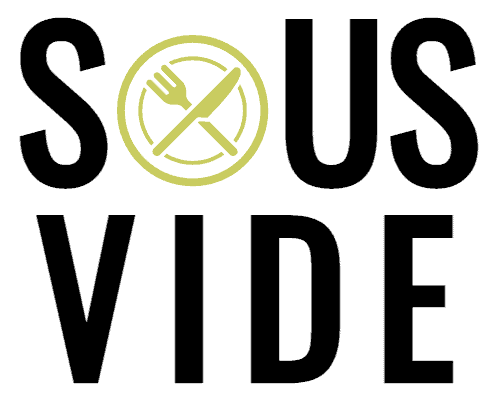Blue rare steak gets its name from the purplish blue color of the close-to-raw center. It has an intense gamey flavor, is juicy and slightly chewy. In a tender way, not a gristly one. And if you prefer the black and blue variation, we’ll help you prepare it.
Besides highlighting a steak’s meaty flavor, a blue rare steak also has health benefits!
The problem is that harmful bacteria (like E. coli and salmonella) can live on the surface of a steak. And, if you don’t prepare your blue rare steak properly, it can get you seriously sick.
Food safety was a cornerstone of my culinary school experience, and we learned (at length) how to use high-heat searing to eliminate bacteria. In this article, I’ll pass along details of how to quickly sear a rare steak, so it is pathogen-safe while maintaining a purplish blue center.
Table of Contents
How Do You Prepare Blue Steak Safely?
Start by ensuring that your steak is fresh without any signs of spoilage. Then, inspect the meat to confirm there aren’t any blemishes.
Let the steak rest on the counter for 10-20 minutes, until it approaches room temperature. This way, you’ll get the perfect sear and an evenly cooked result.
Since pathogens can’t penetrate the surface of the steak, our focus will be on quickly searing each side of the steak over high heat. This will kill any bacteria but keep the center blue rare and cool to the touch.
The chart below, from our friends over at Food Safety Magazine, shows temperature values that affect growth and survival or destruction of foodborne pathogens. As you can see from the chart, at temperatures exceeding 170°F, harmful bacteria will die off in seconds.
Foodborne Pathogen Chart: Growth and Destruction by Temperature

Open-flame grilling is the best way to cook a blue rare steak. Exposure to high heat exceeding 170°F kills surface bacteria in seconds. This way, the steak’s internal temperature doesn’t pass 115°-120°F, but there’s no risk of illness.
Now, let’s go through step-by-step the best way to cook a blue steak safely:
Step-by-Step Directions
- Let your steak come to room temperature for no longer than a couple hours (see chart above for why regarding time).
- Preheat your grill to high heat.
- Sear each side of the steak. It’ll only take about 1 minute per side.
- Remove the steak from the grill and rest for about 5 minutes. This way, the juices can reabsorb into the meat.
- Finally, slice it up and dig in!
Pro Tips
- With some practice, you’ll come to learn what temp you prefer your Blue rare steak to be. As you try and reach that temperature with different thickness of steaks, use a meat thermometer as an aid. You’ll generally want to pull the steak 5 degrees before it reaches your desired temp because resting will usually lead to an increase of roughly 5 degrees.
- Sous vide machines can be a useful pre-step, particularly in very thick steaks. Plus, there’s the added benefit of being able to cook your steak from frozen.
Reasons To Eat Blue Rare Steak
One of the most compelling reasons to eat blue rare steak is its health benefits.
Rare steak gives your body access to the Omega-3 fatty acids within the meat. These fatty acids help regulate blood clotting and are anti-inflammatory. Plus, they can lower cholesterol, and reduce the risk of heart disease.
Rare steak instantly gives your body a wealth of iron, phosphorus, and zinc. They increase the oxygen in your blood and strengthen your bones, leading to a boost of energy.
Aside from the health benefits, many people enjoy blue rare steak for its taste. This doneness highlights the meaty, gamey taste. It’s much more intense than a medium-rare or rare steak’s flavor.
Oh, and the red juice in a rare steak isn’t actually blood. It’s myoglobin and water. That’s what adds a burst of flavor to each bite.
When meat cooks, the muscle fibers contract and stiffen. So, eating a blue rare steak means the muscle is still soft and loose, which results in an ultra-tender, melt-in-your-mouth texture.
Dangers of Eating Blue Steak
Most official food safety publications are quick to point out that food poisoning is the result of improper food handling practices. So the key to a delicious and safe blue steak is all in the preparation.
To begin with, you’ll need fresh meat. Inspect the steak for any signs of spoilage prior to cooking and consumption.
Additionally, ensure there are no cuts, slices, or gauges in the steak that could provide bacteria an entry point into the interior of the meat.
On that note, please don’t eat raw bacon. There seems to be some confusion as to whether or not it’s safe.
Costco Warning: Blade-Tenderized Steak
Blade tenderizing, which is also known as needling, is a process that involves puncturing meat to tenderize it. Most of the meat sold under the Kirkland brand is blade-tenderized, even the prime steaks.
The practice of blade tenderizing creates the opportunity for bacteria to live within the steak, not just on the surface. For this reason, we would advise against eating Costco steaks blue rare.
Of course, Costco isn’t the only retailer that blade tenderizes their beef. It’s a good idea to check with the retailer whether the cuts they offer are blade tenderized.
Blade-tenderized beef has been linked to several E. coli outbreaks.
But remember that bacteria in steak are killed at 145°F. So, cooking a fresh, clean piece of meat (not blade tenderized and otherwise free of cuts, slices, and gauges) with a high-heat sear will not get you sick.
But again, it’s crucial to prepare the steak properly. Otherwise, you could end up with a foodborne illness.
How Rare Can a Steak Be and Still Be Safe?
Harmful bacteria that can get you sick lives on the surface of the meat. Steak has an impermeable surface that prevents pathogens from infiltrating the interior.
By searing at a high temperature, you will kill all bacteria as long as the steak has no cuts, slices, or gauges and isn’t blade tenderized. The result will be a steak that is safe to eat even at super rare temperatures, like blue rare steak.
Allow your steak to come to room temperature, then give it a quick sear, about 1 minute per side. The internal temperature will be between 115°F – 120°F and a purplish-blue color. But, you will have killed off any harmful bacteria on the surface of the meat during the sear.
This is a great way to keep a tougher steak cut tender and juicy. Plus, you’ll get the added anti-inflammatory health benefits of rare steak.
Best Steak Cuts for Blue Rare
There are some things to consider when choosing a cut for blue rare. Your fat will not render, which leads me to leaner cuts that are naturally tender. The obvious choice is filet mignon, or beef tenderloin. Strips steaks that are on the leaner end also make for a good choice.
Variation: Black and Blue Steak Pittsburgh Style
A black and blue steak is a blue rare steak with an extreme char. The name comes from the Industrial era steel mills, which Pittsburgh is well known for. Steel mill workers would cook their steaks on the extremely hot blast furnaces, charring the outside black while leaving the inside extremely rare, or blue.
This is why its called a black and blue steak Pittsburgh style.
These days, the key to preparing a black and blue steak is to cook it an extremely hot grill where the flames are rising well above the grates.
Using steak fat to drip and cause flare ups is perfect for black and blue steaks. I would avoid cuts like ribeye where there’s knots of fat within the steak. The fat simply won’t cook, let alone render, leaving it gnarly.
Instead use something like a picanha or New York strip and trim the fat but use it to incite flare ups. Or you can use filet mignon for that perfectly suited interior, but use loads of frozen butter on the exterior. You want the butter frozen to slow the drip.
Pro tip: you can use place an upside down seasoned cast iron pan over the steak and fat to further engulf the steak in the flare ups. And if black and blue is your preferred method for cooking steak, consider purchasing a GrillBlazer Su-VGun.
So, skip the medium-rare restaurant fare. Now, you can safely and confidently cook yourself a healthy, meaty blue steak at home.
Blue Rare FAQ
Yes, eating a blue rare steak is perfectly safe, provided it’s cooked properly. A high-heat sear will kill any harmful bacteria on the steak’s exterior. So, as long as you purchase fresh, clean meat from a reputable source, it’s safe to eat blue rare steak. It’s worth checking with your retailer if they blade tenderize the meat, which you should avoid preparing blue rare.
As long as the outside of the steak has been seared at a high temperature, there is no color too rare for steak. Once the exterior bacteria has been killed with high temperature, the interior can be a blue-rare and still safe to eat.
Yes, eating a blue steak is good for you. Steak contains Omega-3 fatty acids. At high temperatures, these acids denature and aren’t of much help to your body. However, a blue rare steak’s center hasn’t reached a high enough temperature to denature these acids. So, you’ll actually access Omega-3 anti-inflammatory benefits.

